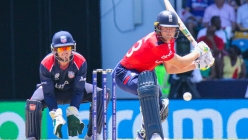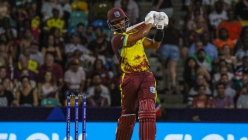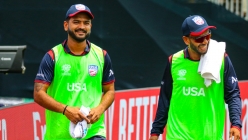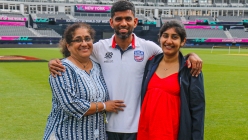USA Cricket: 2019 CWC League Two Florida Tri-Series Tour Report Card Part 1 – Team Grades
2019 Sep 25 by DreamCricket USA
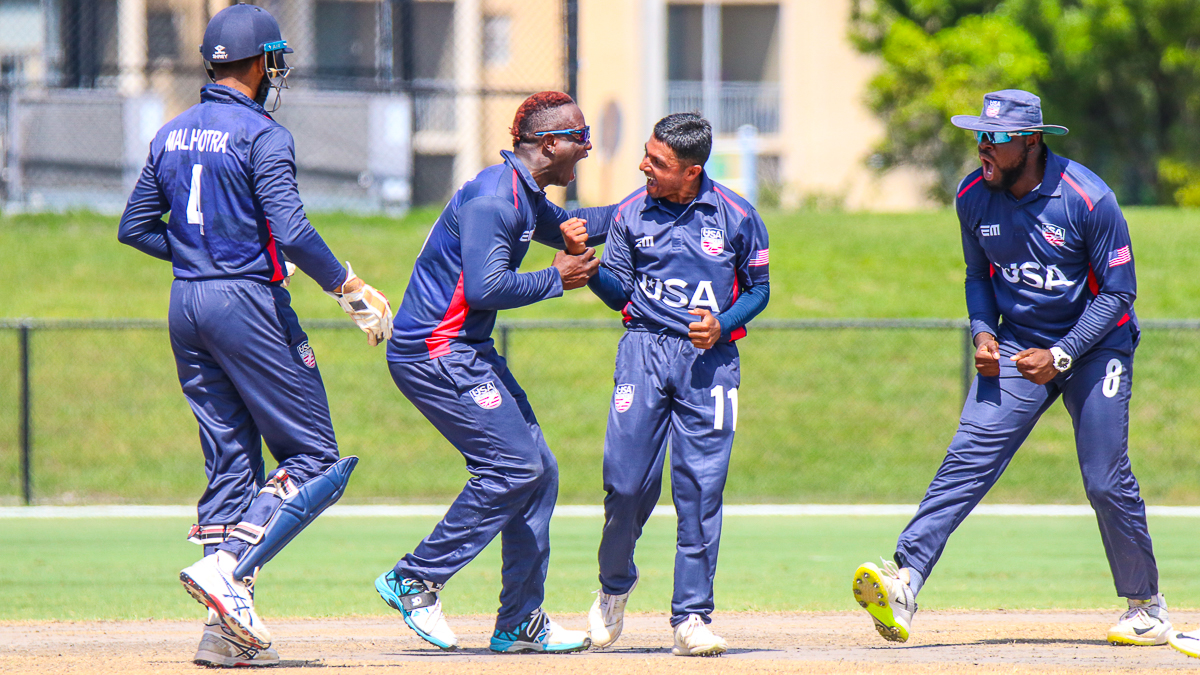
Photo credit: Peter Della Penna
Part one of DreamCricket's tour report card review of USA's home tri-series in Florida against Namibia and Papua New Guinea focuses on each of USA's collective performances in four areas: batting, bowling, fielding and fitness.
By Peter Della Penna (Twitter @PeterDellaPenna)
Batting: D
USA only had two players pass 100 runs in the four matches on what were very decent batting tracks that were not as hopeless to score runs on as may have first appeared by the scorecards. By the end of the series it became clearer that it was USA’s technical batting frailties that made the pitches look trickier than they were as the overall woes from the tour of Bermuda were still evident in Florida.
USA only had three half-century partnerships in their four matches, the best of them a 78-run stand between Aaron Jones and Monank Patel on day one that went a long way to reviving USA’s floundering start. The fourth-highest stand of the series for USA was an unbroken 49-run stand for the 10th wicket, the second highest 10th wicket partnership of all time for USA in 50-over cricket. Practically half of those runs came off Hutchinson’s bat in the final over of the innings, as he hit three sixes in a 24-run frame without which USA might have lost instead of winning by five runs on DLS Method.
Jones and Monank were also involved in the other two half-century stands by USA during the week (Jones adding 58 for the seventh wicket with Karima Gore in the same opening day win over PNG; Monank teaming with Steven Taylor to add 68 for the third wicket in the second match win over Namibia), but otherwise the top-order contributions were poor.
The only two players to score half-centuries for USA on the week were Jones and Monank. This looks particularly dreadful when weighed up to the number of times players from Namibia and PNG went past 50, including two centuries. If there was a home field advantage to be had considering the frequency with which most if not all of USA’s players have played on an annual basis inside the Central Broward Regional Park, whether it is via national team camps or tournaments like the US Open, it certainly didn’t show up on the batting side.
The opening combination of Xavier Marshall and Jaskaran Malhotra was a microcosm of the overall struggles against disciplined but not express pace bowling in the Powerplay. Their opening stands averaged 16.25, exposing the middle order early in every game and the result was that USA’s average Powerplay score was 41, with three wickets lost by the 10th over in three of the four matches.
USA’s decision to leave Timroy Allen out of the squad (even though he was practicing daily with the team as a reserve) was a selection misfire considering how badly the No. 6 and 7 slots struggled to score runs in the absence of Hayden Walsh Jr. Gore did an admirable job rotating the strike as a stop-gap solution but he has not showcased an aggressive streak needed for that role and Nisarg Patel continued to fail when given repeated opportunities with the bat in that position.
The overall lack of aggression from the batting unit that was a major downfall of the team on tour in Bermuda at the T20 World Cup Americas Regional Final was also a vulnerability that was exposed by JP Kotze in USA’s final match against Namibia. Going back to the tour of the UAE in March, USA has been placed in numerous situations with windy conditions in which opposition sides have torched USA’s bowling attack by utilizing the wind at their back.
Conversely, USA’s batsmen have rarely been able to utilize conditions to their advantage from either end. USA hit just 13 sixes on the week, half as many as Namibia’s 26. Five of those came from Elmore Hutchinson, including four in his match-rallying knock on day one. It’s ironic that USA’s batting order, whose players are notorious for bullying club sides in various domestic T20 events, are now struggling to replicate those same feats in a national team uniform.
Bowling: B-
USA’s spinners were exceptional on tracks that were offering a little bit, but not excessive, assistance to slow bowling by regularly attacking the stumps. The medium pacers on the other hand struggled to extract assistance, especially in the Powerplay compared to the success that opposition medium pacers had all week at getting USA’s top-order out with the new ball.
USA’s bowlers overall claimed 32 out of a possible 40 wickets. PNG finished six down in an abbreviated 23-over chase while USA took eight out of 10 wickets in their last-day match against Namibia. The other two wickets came via runouts. But 25 of those 32 wickets were taken by spinners and just seven by USA’s pace bowlers. That’s four fewer wickets than PNG’s left-arm seamer Nosaina Pokana took by himself in Florida. USA’s bowlers allowed four half-century stands in the tri-series, including three in one match against Namibia in their final match.
But as they were in Bermuda, USA’s pace bowling weakness was exposed by the absence of Ali Khan. Netravalkar and Theron bowled quite well at the death in the 23-over chase by PNG, but USA struggled to plug the gap in the last match against Namibia where Khan is at his best in the death overs. If Khan continues to choose T20 franchise cricket over USA when scheduling clashes present themselves, it could mean USA struggles quite regularly in conditions and situations that favor pace bowling.
Fielding: B+
USA only missed four chances in the field, virtually all of them very difficult ones. Two of them were spectacular diving efforts by Monank and Jones who did well just to get to the ball on each occasion. A third went quickly through Taylor’s hands at slip while the other was a missed runout chance by Gore. The chances cost USA a total of 83 runs. Conversely, USA’s batsmen were given eight extra lives during the tri-series and scored an extra 75 runs after the first drop.
USA’s fielding is much crisper along the ground than it has been in the past and their overall catching is sharper from the standpoint that fewer straightforward chances are put down. It allows pressure to be created in the minds of the opposition batsmen knowing that if a chance is created, it most likely will be converted. Some of that is down to newer personnel like Gore in the field but some credit must also be given to fielding coach James Pamment for getting the players to achieve a level of consistency that could not be produced by some of his predecessors on tours.
Fitness: B
The only major blemish was Rusty Theron being ruled out after one match with a groin strain. But in sweltering conditions in the south Florida heat and humidity, USA’s players looked very fit and able to handle the weather challenge from a physical fitness perspective. Strength and conditioning coach Burt Cockley continues to demonstrate positive results from tour to tour.
[Views expressed in this article are those of the author, who was present at all of the team's matches on tour in Florida, and do not necessarily represent the views of DreamCricket management. If you have different views or opinions, we respect those views and urge you to provide your feedback, both positive and negative. Feel free to respond to the author via Twitter @PeterDellaPenna.]
